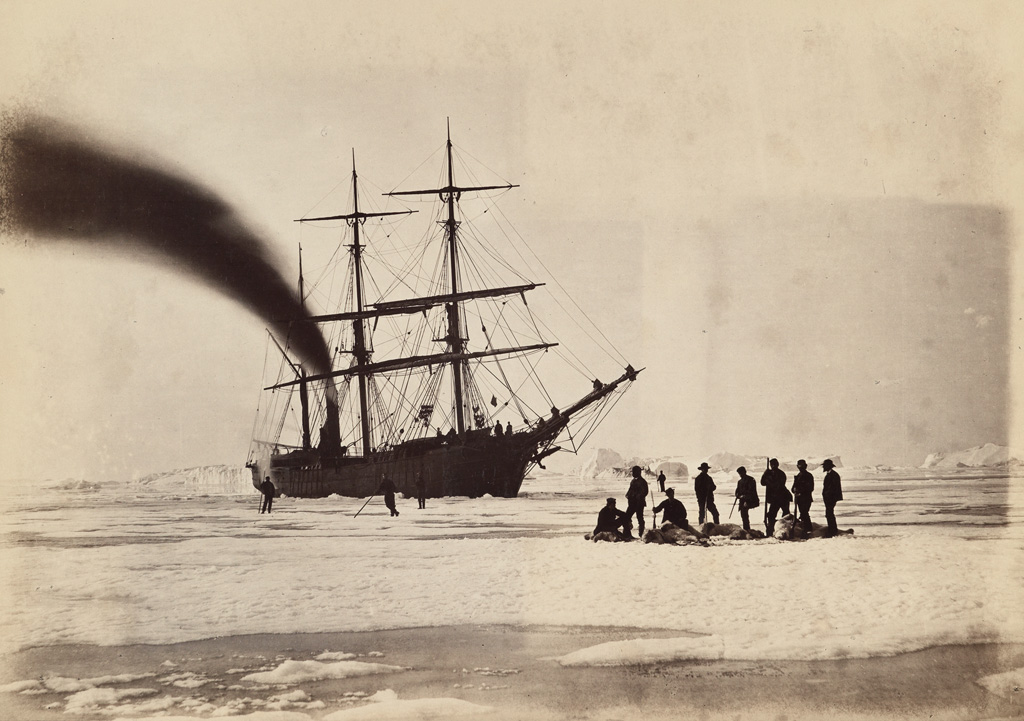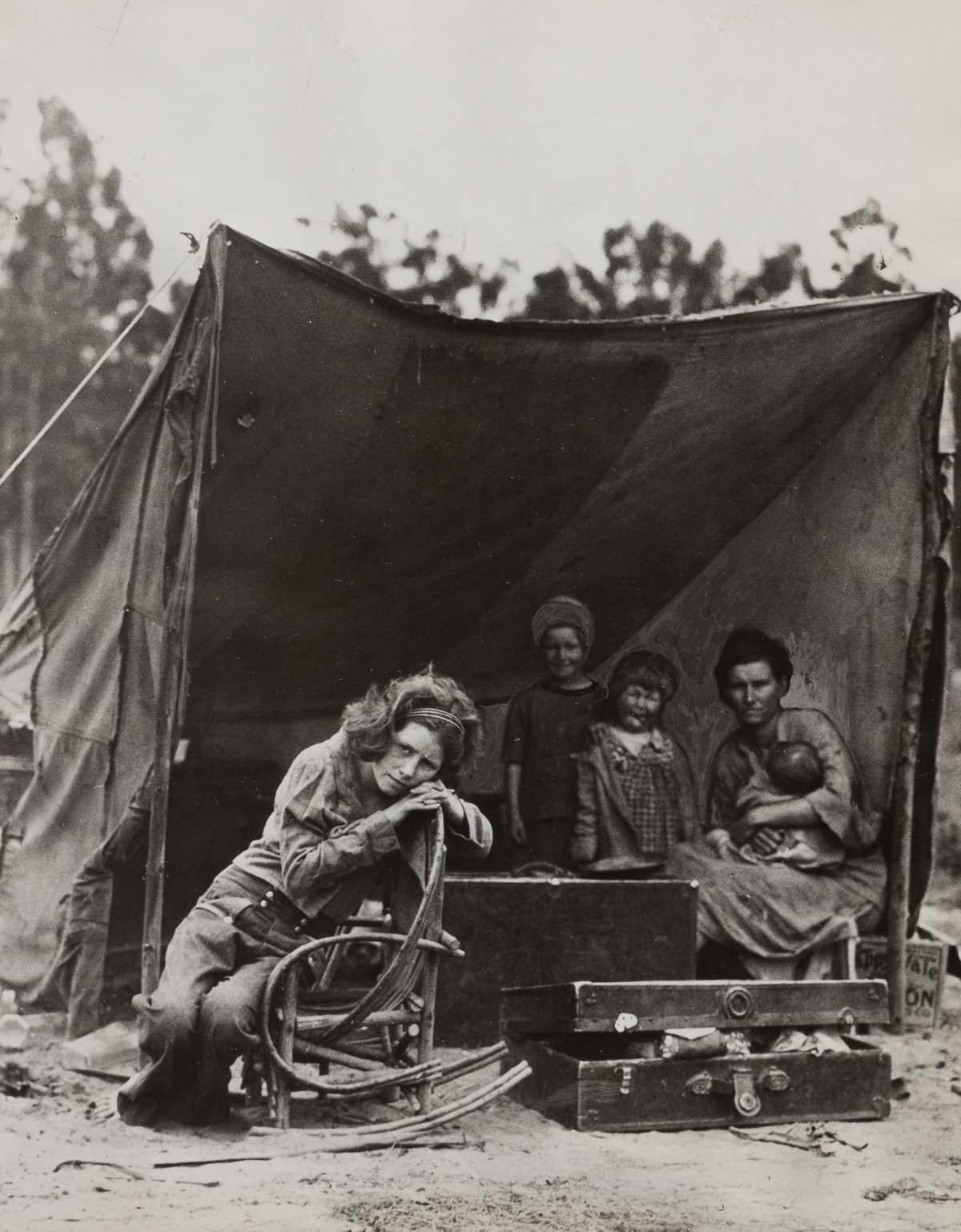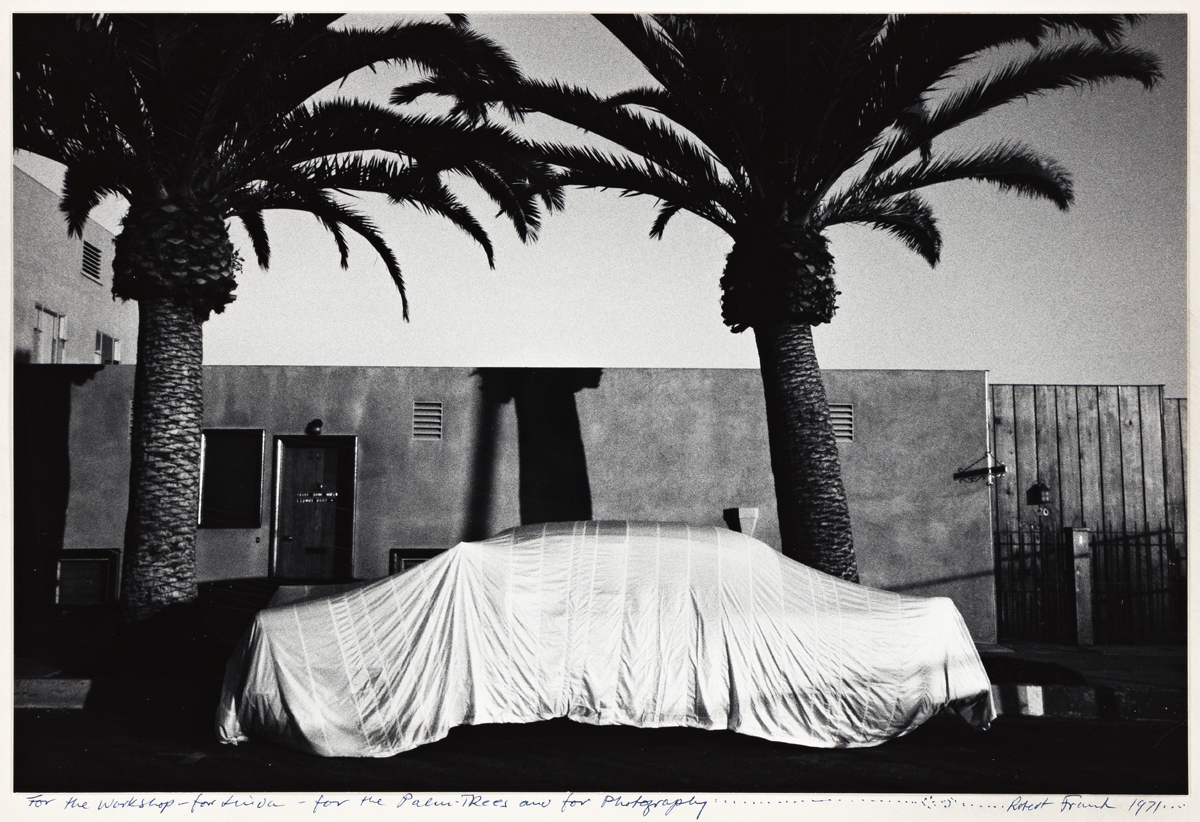New York Through Photographs
New York City, in its state of inevitable change, its restless power, its siren’s call to dreamers and doers, has proven irresistible to the camera’s lens. Photographers have captured the city’s steady growth toward the sky, its ever-changing neighborhoods, its residents moving and creating and living, its concrete and parks, its bridges and trains, and found within its rough and beautiful texture inspiration for high editorial fashion, gritty street art, stories to tell of those arriving and those leaving, and always much, much more. Below is a selection of the photographers and images that have come to represent New York City—coming to auction on September 26, 2024.
Margaret Bourke-White

Left: Margaret Bourke-White, The Chrysler Building under construction, toned silver print, 1930. $30,000 to $45,000.
A fearless trailblazer, Margaret Bourke-White was among the first photographers (and the first female photographer) hired for Fortune and Life magazines, the first female accredited as a war photographer, and the first woman to fly on a bombing mission. Her ambition in a male-dominated world pushed her to test her limits and the limits of what a camera could capture (her colleagues at Life nicknamed her Maggie the Indestructible). Bourke-White’s imagery was unique, powerful, and innovative, witnessing much of the twentieth century’s beauty and brutality.
In 1930, Bourke-White was commissioned by the Chrysler Corporation to photograph their new skyscraper while it was still under construction (it would briefly become the tallest structure in New York). This image documents the iconic terraced crown with its sunburst pattern partially covered in scaffolding. In this series, Bourke-White portrays a city that is powerful, reaching further and further into the sky and the future. In her autobiography, Portrait of Myself, Bourke-White says of her first glimpse of the Chrysler Building gargoyles, “On the sixty-first floor, the workmen started building some curious structures which overhung 42nd Street and Lexington Avenue below. When I learned these were to be gargoyles à la Notre Dame but made of stainless steel as more suitable for the twentieth century, I decided that here would be my new studio. There was no place in the world that I would accept as a substitute. I was ready to close my studio in Cleveland in order to be nearer Fortune, but it was the gargoyles which gave me the final spurt to New York” (p. 78).
Berenice Abbott

Inspired by Eugène Atget’s photographs of Paris (which Abbott called “realism unadorned”), Abbott created what may be the defining vision of New York—and, in fact, one of the greatest photo undertakings of the 20th century—with her project Changing New York. Abbott returned to New York from Europe in 1929. She found a city being remade, making way for skyscrapers and new growth. Abbott picked up her camera to record. In 1935, the Federal Art Project offered her funding to support her project, including a $145 monthly salary, a field assistant, research assistants, a secretary, and a car. She published her landmark book Changing New York in 1939. The resulting imagery is documentary in nature, but also filled with awe, surprise, reverence, and beauty. Abbott said: “Old New York is fast disappearing. At almost any point on Manhattan Island, the sweep of one’s vision can take in the dramatic contrasts of the old and the new and the bold foreshadowing of the future. This dynamic quality should be caught and recorded immediately in a documentary interpretation of New York City. The city is in the making and unless this transition is crystalized now in permanent form, it will be forever lost…The camera alone can catch the swift surfaces of the cities today and speaks a language intelligible to all.”
William Klein
A self-taught photographer, William Klein was born in New York but moved to Paris in 1949, briefly studying painting with Fernand Léger. His first photobook, Life is Good and Good for You in New York (1956), was made with a handheld camera and the eyes of a native’s return after being lured to the city by Vogue’s art director Alexander Liberman (they funded Klein’s New York project but never published any of it). Using accidents and the raw energy of the city he was photographing, Klein created what would become a radical homage to the urban environment. Through his eyes, the city is mysterious, crowded, anxious, edgy and pulsing with life. Without using text as a support, Klein designed an accompanying pamphlet filled with advertisements and slogans, fulfilling the role of the book as an artistic object. Inside, no two pages are alike—inky, heavy images are bled to the edges, spread across the gutter, framed in white over black, scattered haphazardly or in a grid, mimicking the changing city’s map. Klein’s anti-classical methods are now considered a stylistic prototype of their own.

Klein’s innovative approach to fashion photography, which included utilizing a wide-angle and telephoto lens, made him one of the most influential and modern fashion photographers of his decade with Vogue. With a witty and sophisticated eye, Klein rejected and reimagined the conventions of the format and brought his models out onto the streets, capturing both the elegant allure of fashion and the grit of the surrounding city. This imagery brilliantly captures the feeling of the city street both as a fleeting moment of beauty and a gritty, disordered environment rather than a precise recording of a garment or individual. The feeling of a captured instant, rather than a laboriously arranged shoot, imbues the images with life, implied meaning, and a hint of appealing chaos.
Left: William Klein, Dolores wants a Taxi, New York (Vogue), chromogenic print, 1958, printed 2021. Estimate $15,000 to $25,000.
Anthony Barboza
After his arrival in New York City in 1963 at the age of 19, Anthony Barboza joined The Kamoinge Workshop (now Kamoinge, Inc.), a group then directed by Roy DeCarava, and created to redefine Black art, representation, and experience in America. “They were my professors, and this was my college,” Barboza once said. Barboza is now president of the organization, still addressing the underrepresentation of Black artists. He is largely self-taught with a stylistic intuitive vision that he refers to as “eye dreaming,” or “a state of mind that’s almost like meditation.” Both Barboza’s commercial work, including fashion campaigns for Essence and Ebony magazines and celebrity portraits (Miles Davis, Aretha Franklin, James Baldwin, and Romare Bearden, to name but a few), and his personal projects embrace Black American culture and celebrate his dedication to its communities.


Barboza’s portraits made on the street in Harlem or taken in a studio for his highly acclaimed Black Borders series showcase the intimacy and dialogue inherent to his work. In an article printed in 1984 in The City Sun, Anthony Barboza said, “When I do a portrait, I’m doing a photograph of how that person feels to me; how I feel about the person, not how they look. I find that in order for the portraits to work, they have to make a mental connection as well as an emotional one. When they do that, I know I have it.”
Ernst Haas
Ernst Haas pioneered color photography when the medium was not considered a serious approach to making images, experimenting with a Leica as early as 1949. His use of a slow shutter speed bestowed a sense of movement and vitality, conveying both a record of the city and its kinetic, bright, blurred energy. Haas’ Magic Images of New York, a 24-page color photo essay that appeared in Life in 1951, was both his and Life’s first long color feature in print. In 1962 MoMA presented a ten-year survey of Haas’s color photography, marking the first solo-artist retrospective exhibition dedicated to color work. In contrast to other photographers taking New York City as their subject during this period, Haas’ imagery is poetic and experimental in form and approach, suggesting both a feeling of joy and something of the human experience.

Haas began studying photography at the Graphische Lehr und Versuchsanstalt in Vienna six years before acquiring his first camera in 1946. He was offered a position at Life magazine, and his first feature article, “Returning Prisoners of War,” was published in 1949. This essay prompted Robert Capa to invite Haas to join the Magnum agency, the international cooperative founded by Capa, Henri Cartier-Bresson, George Rodger and Chim (David Seymour). This would lead to Haas’ move to New York, his home for the rest of his life (Haas would also become the President of Magnum). Haas’ 40-year career included documentary, photojournalism, and commercial work, but it is his personal work for which he is most celebrated today.
“Bored with obvious reality, I find my fascination in transforming it into a subjective point of view. Without touching my subject, I want to come to the moment when, through pure concentration of seeing, the composed picture becomes more made than taken. Without a descriptive caption to justify its existence, it will speak for itself – less descriptive, more creative; less informative, more suggestive – less prose, more poetry.” — Ernst Haas
















![Grace Meschery-McCormack shares about two copies of Fernando de Rojas’s ‘La Célestine,’ including a limited edition copy illustrated by Pablo Picasso.
At auction April 22. Learn more about the works at the link in our bio.
#Rarebooks #rarebookdealer #antiquarianbooks #auctions
_______________________________________
Music Credit:
Schubert - Piano Quintet in A major ‘The Trout’, D. 667 - IV. Andantino – Allegretto
Music provided by Classical Music Copyright Free on Youtube [https://tinyurl.com/visit-cmcf]
Watch: • Schubert - Piano Quintet in A major ‘...]](https://scontent-iad3-1.cdninstagram.com/v/t51.75761-15/491443494_18499096345036585_5935932878956098058_n.jpg?stp=dst-jpg_e35_tt6&_nc_cat=107&ccb=7-5&_nc_sid=18de74&_nc_ohc=Kjf2AzWLeY8Q7kNvwEQYrfY&_nc_oc=Adn_Uzi4Nwl1nHCsTtuLCIkthuYOWwKedtxovtcdMSYhpbHQGScR7QSzzN2rD0v-khE&_nc_zt=23&_nc_ht=scontent-iad3-1.cdninstagram.com&edm=AM6HXa8EAAAA&_nc_gid=g-mmtA5NszV6CS-yj0hzrg&oh=00_AfLaVPJlWLuG-Ri_DzbCxxewoKPr55kA2Mokrhefj8C6jQ&oe=6824CA11)

